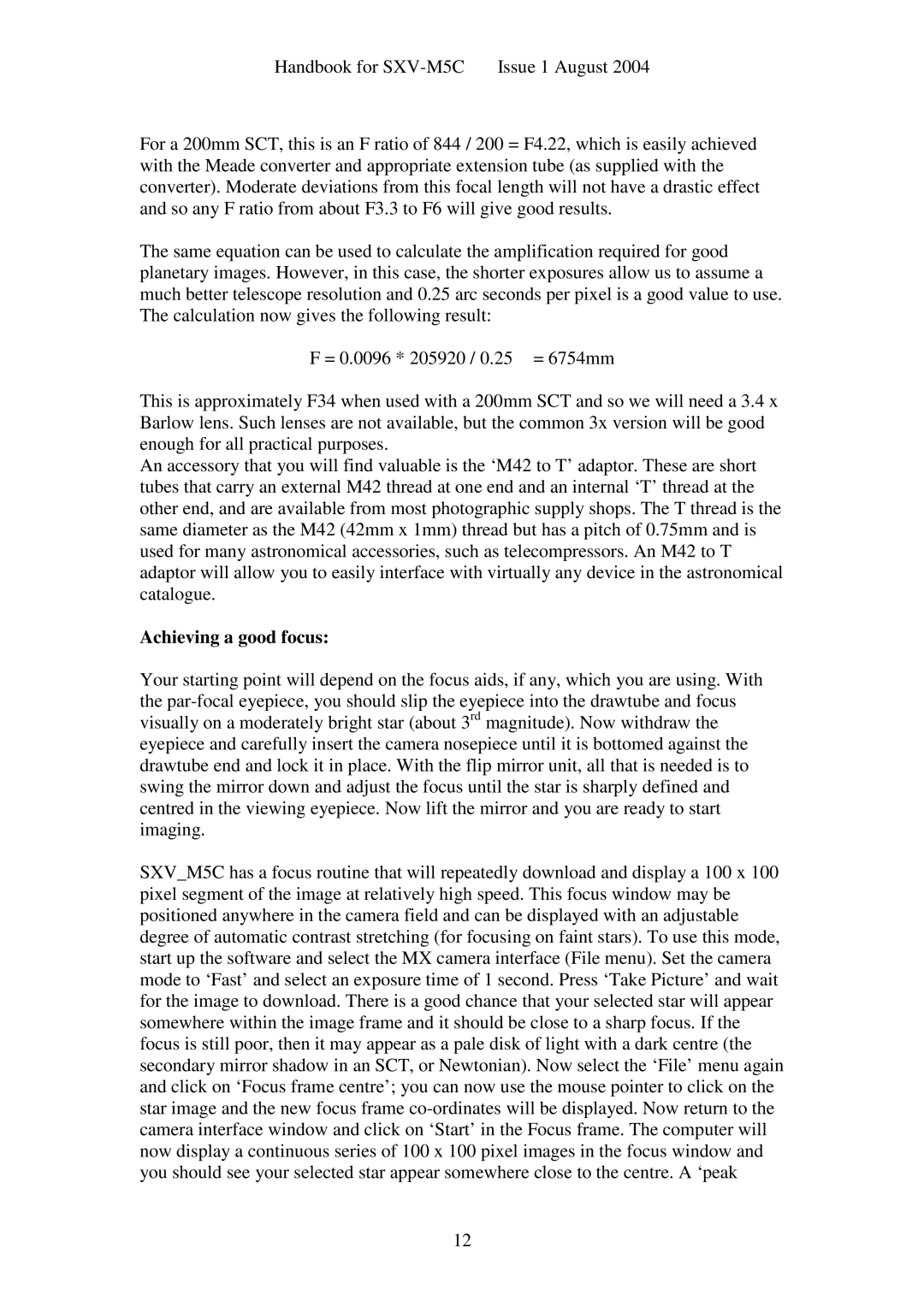Handbook for
For a 200mm SCT, this is an F ratio of 844 / 200 = F4.22, which is easily achieved with the Meade converter and appropriate extension tube (as supplied with the converter). Moderate deviations from this focal length will not have a drastic effect and so any F ratio from about F3.3 to F6 will give good results.
The same equation can be used to calculate the amplification required for good planetary images. However, in this case, the shorter exposures allow us to assume a much better telescope resolution and 0.25 arc seconds per pixel is a good value to use. The calculation now gives the following result:
F = 0.0096 * 205920 / 0.25 = 6754mm
This is approximately F34 when used with a 200mm SCT and so we will need a 3.4 x Barlow lens. Such lenses are not available, but the common 3x version will be good enough for all practical purposes.
An accessory that you will find valuable is the ‘M42 to T’ adaptor. These are short tubes that carry an external M42 thread at one end and an internal ‘T’ thread at the other end, and are available from most photographic supply shops. The T thread is the same diameter as the M42 (42mm x 1mm) thread but has a pitch of 0.75mm and is used for many astronomical accessories, such as telecompressors. An M42 to T adaptor will allow you to easily interface with virtually any device in the astronomical catalogue.
Achieving a good focus:
Your starting point will depend on the focus aids, if any, which you are using. With the
SXV_M5C has a focus routine that will repeatedly download and display a 100 x 100 pixel segment of the image at relatively high speed. This focus window may be positioned anywhere in the camera field and can be displayed with an adjustable degree of automatic contrast stretching (for focusing on faint stars). To use this mode, start up the software and select the MX camera interface (File menu). Set the camera mode to ‘Fast’ and select an exposure time of 1 sec ond. Press ‘Take Picture’ and wait for the image to download. There is a good chance that your selected star will appear somewhere within the image frame and it should be close to a sharp focus. If the focus is still poor, then it may appear as a pale disk of light with a dark centre (the secondary mirror shadow in an SCT, or Newtonian). Now select the ‘File’ menu again and click on ‘Focus frame centre’; you can now use the mouse pointer to click on the star image and the new focus frame
12
